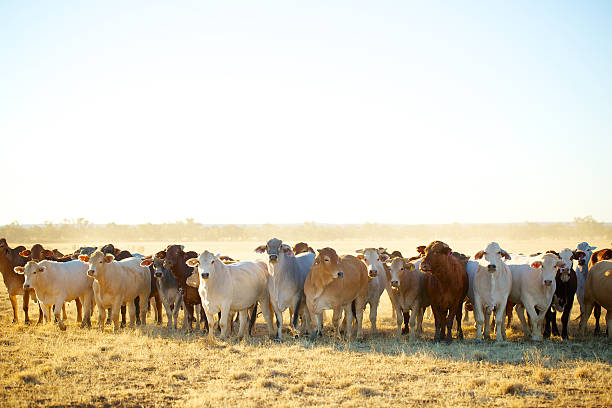Beyond the Fundamentals: Advanced Techniques for Reproduction and Managing Constance Cattle
Beyond the Fundamentals: Advanced Techniques for Reproduction and Managing Constance Cattle
Blog Article
Master the Art of Food Preparation With Turf Fed Meat
In the realm of culinary competence, grasping the art of food preparation with grass-fed meat holds a prestigious position. From the tender structure to the robust taste profile, grass-fed meat offers a canvas for cooking creative thinking.
Advantages of Grass-Fed Meat

When picking grass-fed meat, consumers can take advantage of its higher degrees of omega-3 fatty acids and anti-oxidants compared to conventionally raised meat. Constance Cattle. Omega-3 fatty acids are essential nutrients that sustain mind health, lower swelling, and promote heart wellness. Grass-fed meat is known to have up to 5 times more omega-3 fatty acids than grain-fed meat, making it a much healthier selection for those seeking to raise their consumption of these beneficial fats
Along with omega-3 fatty acids, grass-fed meat is likewise richer in anti-oxidants such as vitamins E and C, as well as beta-carotene. Anti-oxidants play a vital duty in shielding cells from damage triggered by cost-free radicals, which can contribute to numerous persistent conditions and accelerate aging. By choosing grass-fed meat, customers can not just appreciate a much more delicious and nutrient-dense healthy protein source yet also support their overall health and wellness and well-being.
Integrating grass-fed meat into your diet plan can be a basic yet effective way to improve your nutritional consumption and profit of omega-3 fats and antioxidants that are naturally plentiful in this sort of meat.
Finest Cooking Methods
Utilizing ideal cooking approaches is important to maintain the nutrient profile and boost the taste of grass-fed meat. When cooking grass-fed meat, it is very important to bear in mind that it is leaner than traditionally raised meat, making it extra vulnerable to drying if overcooked. To make sure a juicy and flavorful outcome, think about cooking grass-fed meat at slightly reduced temperature levels than you would with grain-fed meat.
Grilling is a popular method for cooking grass-fed meat as it enables excess fat to trickle away, protecting against flare-ups that can create charring. Another terrific food preparation technique for grass-fed meat is pan-searing.
Slow food preparation techniques such as braising or stewing are also exceptional options for tougher cuts of grass-fed meat, as they assist break down the muscular tissue fibers and soften the meat. Whichever food preparation approach you pick, remember to let grass-fed meat rest after preparing to enable the juices to rearrange, making sure a wet and tender last dish.
Taste Pairings and Seasonings
To boost the natural flavors of grass-fed meat, tactical taste pairings and seasonings play an essential function in boosting the overall eating experience. Grass-fed meat has an abundant, unique taste that can be matched and enhanced by very carefully picked active ingredients.
Along with natural herbs, seasonings such as black pepper, garlic, and smoked paprika can additionally boost the taste profile of grass-fed meat meals. These flavors provide a balance of warmth, sweet taste, and smokiness that can improve the general dining experience. When flavoring Full Report grass-fed meat, it is vital to utilize top notch salt, like sea salt or Himalayan salt, to bring out the meat's flavors without adding unneeded chemicals or ingredients.
Storage Space and Dealing With Tips
Correct storage space and taking care of practices are important for maintaining the quality and quality of grass-fed meat. Stay clear of keeping grass-fed meat near strong-smelling foods as it can absorb odors conveniently.
When managing grass-fed meat, it is necessary to practice good hygiene to avoid cross-contamination. Clean your hands extensively prior to and after managing the meat, and ensure that all tools and surfaces that come right into contact with the meat are cleansed and sanitized properly. Additionally, use different cutting boards for meat and vegetables to prevent microbial transfer.

Leading Grass-Fed Meat Recipes
When thinking about the best means to savor the high quality and quality of grass-fed meat, checking out first-class dishes can boost your cooking experience. Grass-fed meat's abundant taste and leaner account provide themselves well to a variety of dishes that highlight the all-natural benefits of the meat.
If you remain in the state of mind for something lighter, a Grilled Grass-Fed Hamburger offered with fresh toppings and a side of pleasant potato french fries is a scrumptious selection. In addition, a Herb-Crusted Grass-Fed Crown roast roasted to perfection with a collection of herbs and breadcrumbs is a show-stopping meal for unique celebrations. These top grass-fed meat dishes display the versatility and superior quality of grass-fed meat, permitting you to enjoy its remarkable taste in various cooking creations.

Conclusion
To conclude, grasping the art of cooking with grass-fed meat provides many benefits, including boosted dietary value and remarkable flavor. By utilizing the best food preparation techniques, experimenting with taste pairings and spices, and following correct storage and dealing with ideas, you can here are the findings produce nourishing and delicious recipes. Try out some top grass-fed meat recipes to boost your culinary skills and delight in the complete possibility of this top notch component.
When cooking grass-fed meat, it is crucial to remember that it is leaner than conventionally raised meat, making it much more vulnerable to drying out if overcooked. To ensure a juicy and delicious result, think about cooking grass-fed meat at a little lower temperatures than you would with grain-fed meat.
When seasoning grass-fed meat, it is vital to utilize high-quality salt, like sea salt or Himalayan salt, to bring out the meat's tastes without including unnecessary chemicals or additives.
Grass-fed meat's abundant taste and leaner profile lend themselves well to a variety of meals that highlight the natural benefits read the full info here of the meat. These leading grass-fed meat dishes showcase the flexibility and superior quality of grass-fed meat, allowing you to enjoy its remarkable preference in different cooking productions.
Report this page